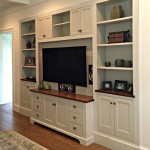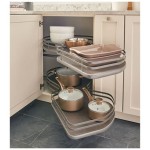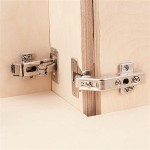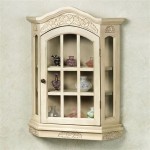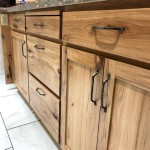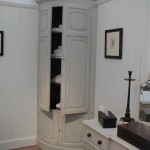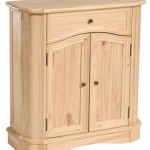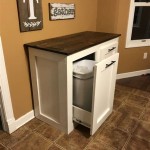Understanding Kitchen Cabinet Drawer Parts: A Comprehensive Guide
Kitchen cabinet drawers are integral components of kitchen design, providing essential storage solutions for utensils, cookware, and other items. The functionality and longevity of these drawers depend heavily on the quality and proper assembly of their individual parts. This article provides a detailed overview of the various parts that constitute a kitchen cabinet drawer, exploring their functions, materials, and common issues that may arise.
Drawer Box Components: The Foundation of Storage
The drawer box forms the main structure of the drawer, providing the enclosed space for storage. It is typically constructed from wood, plywood, or engineered wood products. The drawer box comprises four sides: the front, back, and two sides, also known as drawer sides. The bottom panel, often referred to as the drawer bottom, is attached to these sides to create the enclosed space. The method of joining these sides significantly affects the drawer's structural integrity and weight-bearing capacity.
Drawer Front: The drawer front is the visible face of the drawer, contributing significantly to the overall aesthetic of the kitchen. It is typically made of the same material as the cabinet doors to maintain a consistent design. Drawer fronts can be attached to the drawer box in various ways, including screws, dowels, or specialized drawer front fasteners. The drawer front often includes decorative elements, such as handles or knobs, used for opening and closing the drawer.
Drawer Sides: The drawer sides provide lateral support to the drawer box. They are typically made of solid wood, plywood, or metal. The height of the drawer sides determines the depth of the drawer, indicating how much vertical space is available for storage. Options like dovetail joints or locking joints are used to attach these sides to the drawer front and back, enhancing strength and durability.
Drawer Back: The drawer back provides support to the rear of the drawer box and is often constructed from the same material as the drawer sides. Its height is generally lower than the drawer sides to allow for clearance when installed in the cabinet. Similar to the drawer sides, the drawer back is typically attached to the drawer sides using durable joinery methods.
Drawer Bottom: The drawer bottom provides a horizontal surface within the drawer box, supporting the weight of the stored items. It is typically made of plywood, hardboard, or melamine. The drawer bottom is usually attached to the drawer sides, front, and back using glue, screws, or staples. Thicker drawer bottoms provide greater strength and are recommended for drawers intended to hold heavier items.
Drawer Glides: Enabling Smooth Movement
Drawer glides, also known as drawer slides, are hardware components that enable the smooth and controlled movement of the drawer in and out of the cabinet. They are typically mounted to the drawer sides and the interior of the cabinet frame. The type of drawer glide used significantly affects the drawer's load capacity, ease of operation, and longevity.
Ball-Bearing Glides: Ball-bearing glides are a common type of drawer slide known for their smooth and quiet operation. They use small ball bearings to reduce friction as the drawer moves. Ball-bearing glides are available in various weight ratings and extension lengths. These slides are often preferred for heavy-duty applications due to their robust construction and smooth motion.
Roller Glides: Roller glides use plastic or nylon rollers that roll along a track to facilitate drawer movement. They are typically less expensive than ball-bearing glides but may not offer the same level of smoothness or load capacity. Roller glides are suitable for lighter-duty applications where cost is a primary concern.
Soft-Close Glides: Soft-close glides incorporate a mechanism that gently closes the drawer, preventing it from slamming shut. This feature reduces noise and wear on the cabinet and drawer components. Soft-close glides are available in both ball-bearing and roller glide configurations and are often considered a premium upgrade.
Under-Mount Glides: Under-mount glides are installed beneath the drawer box, rather than on the sides. This configuration provides a cleaner, more streamlined appearance, as the glides are hidden from view. Under-mount glides are typically more expensive than side-mount glides but offer superior stability and weight capacity.
Full-Extension Glides: Full-extension glides allow the drawer to be pulled out completely, providing full access to the contents. This is particularly useful for deep drawers where items at the back might be difficult to reach with standard glides. Full-extension glides are available in various weight ratings and types, including ball-bearing and under-mount configurations.
Fasteners and Joinery: Securing the Structure
The method of joining the drawer box components, as well as the type of fasteners used, significantly affects the drawer's overall strength and durability. Various joinery techniques and fasteners are employed to ensure the drawer box can withstand the stresses of daily use.
Dovetail Joints: Dovetail joints are a classic and highly durable joinery method used to connect the drawer sides to the front and back. The interlocking, wedge-shaped pins and tails create a mechanical bond that resists pulling forces. Dovetail joints are considered a sign of high-quality craftsmanship and are often found in premium cabinets.
Dado Joints: A dado joint involves cutting a groove into one piece of wood and inserting another piece into that groove. This creates a strong and stable connection, particularly when combined with glue and fasteners. Dado joints are commonly used to attach the drawer bottom to the drawer sides, front, and back.
Rabbet Joints: A rabbet joint involves creating a recess along the edge of one piece of wood and fitting another piece into that recess. Rabbet joints are simpler to create than dovetail or dado joints but still provide a reasonably strong connection. They are often used for less demanding applications or in conjunction with other fasteners.
Screws: Wood screws are commonly used to reinforce joints and secure the drawer box components. The type and size of screw used will depend on the material and thickness of the wood being joined. It is crucial to use screws that are long enough to provide adequate holding power but not so long that they protrude through the other side.
Nails: Nails can be used to assemble drawer boxes, particularly in less demanding applications. However, nails do not provide as much holding power as screws and are generally not recommended for high-stress joints. Brad nails or finish nails are often used to attach the drawer bottom to the drawer box.
Adhesives: Wood glue is an essential component of drawer box assembly. It provides a strong and permanent bond between the wood components. High-quality wood glue is crucial for ensuring the longevity and structural integrity of the drawer.
Drawer Front Attachment: Integrating Aesthetics and Function
The method used to attach the drawer front to the drawer box is crucial for both aesthetics and functionality. A secure and properly aligned drawer front ensures the drawer operates smoothly and maintains the desired appearance of the kitchen cabinetry.
Screws: Screws are a common method for attaching the drawer front to the drawer box. Typically, screws are driven from the inside of the drawer box into the back of the drawer front. Pilot holes are recommended to prevent splitting the wood.
Drawer Front Fasteners: Specialized drawer front fasteners are designed to provide a secure and adjustable connection between the drawer front and the drawer box. These fasteners typically consist of metal brackets and screws that allow for fine-tuning the alignment of the drawer front.
Adhesive: While not typically used as the sole method of attachment, construction adhesive can be used in conjunction with screws or fasteners to provide additional bonding strength between the drawer front and the drawer box.
Maintenance and Common Issues
Proper maintenance is essential for ensuring the longevity and optimal performance of kitchen cabinet drawers. Regular cleaning and lubrication can prevent common issues such as sticking, squeaking, and misalignment.
Sticking Drawers: Sticking drawers can be caused by a variety of factors, including misalignment of the drawer glides, swelling of the wood due to humidity, or debris obstructing the glides. Lubricating the glides with silicone spray or adjusting the alignment of the drawer box can often resolve this issue.
Squeaking Drawers: Squeaking drawers are typically caused by friction between the drawer glides and the cabinet frame. Lubricating the glides with silicone spray or applying felt pads to the contact points can often eliminate the squeaking.
Misaligned Drawers: Misaligned drawers can be caused by loose screws, damaged drawer glides, or warping of the drawer box. Tightening the screws, replacing the drawer glides, or reinforcing the drawer box can often correct the misalignment.
Damaged Drawer Bottoms: Damaged drawer bottoms can be caused by excessive weight, moisture exposure, or impact. Replacing the drawer bottom with a new piece of plywood or hardboard is often the best solution.
By understanding the various parts of a kitchen cabinet drawer and their functions, homeowners can effectively maintain their cabinets and address common issues that may arise. Proper care and maintenance will ensure the longevity and optimal performance of these essential kitchen storage solutions.

Cabinet Parts And Profiles

Cabinet Hardware Drawer Inserts Triangle Pacific

Cabinet Composition What Makes A High Quality

The Complete Guide To Choosing Drawer Slides Cdnm Cabinet Doors N More

How To Build Under Cabinet Drawers Increase Kitchen Storage Furniture

Drawer And Cabinet Parts Repair Replacement Hardware Prime Line

Kv Monorail Drawer Slide Parts

Westland Cabinet Refacing Services Custom Kitchen Creations

Fufu Gaga White Wooden Sideboard Storage Cabinet With Wall Mounted Kitchen Two Parts Lbb Kf210186 01 02 The Home Depot

How To Build Drawer Base Cabinets Houseful Of Handmade
Related Posts

